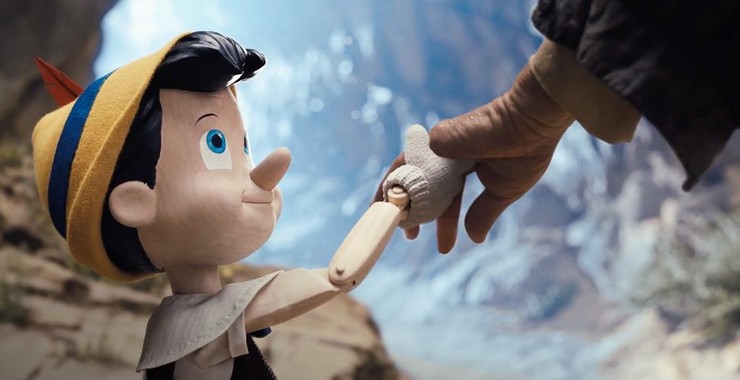The original “Pinocchio” movie, released in 1940, is widely considered a classic and a work of genius. The version released in 2022? Not so much.
Whenever Director Robert Zemeckis decided to let Disney’s new remake diverge from the original 1940 animated version of “Pinocchio,” he made it harder for children to relate to the titular protagonist. The trademark naivete of Pinocchio (played by Benjamin Evan Ainsworth) oftentimes feels downsized compared to the original as there are scenes where he is clearly aware that he is in a dangerous situation, a quality that the original Pinocchio (played by Dick Jones) did not possess. The original Pinocchio was not a great judge of character as he thought that Stromboli (played by Charles Judels in the original film and by Giuseppe Battiston in the remake), a greedy puppeteer, was a trustworthy person until he locked him in a birdcage. He was also gullible enough to think that Pleasure Island, a decrepit and damaged place, where Pinocchio and misbehaved children go to have fun without adult supervision, is a fun place for kids to let loose and misbehave.
The live-action version of Pinocchio, on the other hand, looked around Stromboli’s carriage seeing the old and broken marionettes, thereby causing him to worry that Stromboli might do the same to him and he hated to see the children act disorderly, knowing that his father would be disappointed in him if he did the same. It made more sense that Pinocchio, in the animated film, thought that anybody can be trustworthy and it was okay to misbehave because it makes him seem more relatable as some children are not great at reading people and are gullible enough to think that there is joy in misbehaving. Because of this, the live-action version of Pinocchio seemed less relatable and his development into a more mature and selfless person feels rushed and inorganic.
However, in places where the remake remained faithful to the original film the execution was also lacking. Even though it showed the same scenes, the same impact was not felt. One example is the scene where Pinocchio’s friend on Pleasure Island, Lampwick (played by Frankie Darro in the original and by Lewin Lloyd in the remake), turns into a donkey. Personally, I feel that the scene was not as terrifying as it was in the original since the effects the filmmakers used in the remake looked fake and almost comical; Lampwick’s transformation was also too rushed to leave much of an impact. Not to mention, Pinocchio’s look of horror in the original as well as Lampwick’s cries for help as he slowly loses the ability to talk during his transformation was just haunting. It helped that each of these moments were shown at a slower pace,allowing the audience to have enough time to feel something from this scene.
The acting performances were one of the only highlights of this film with Tom Hanks and Keegan-Michael Key standing out in particular. Film critic Robert Kojder criticized Hanks for making Geppetto, the woodcarver who created Pinocchio, look like a “a raving nutjob that should be committed to the nearest insane asylum in his Italian village.” I, however, found Hanks’ version of Geppetto to be just as charming and eccentric as the original, and is also, surprisingly, a more tragic figure. In the remake, he lost his son and made Pinocchio look just like him due to his inability to cope with this loss.
In regards to Keegan-Michael Key’s vocal performance as Honest John, a cunning, anthropomorphic red fox, Joey Rambles, at Cultured Vultures, contended that Key’s “voice acting is so histrionic and overdone that it makes his character incredibly hard to take seriously.” However, I thought that Key’s vocal performance as Honest John was hilariously over-the-top and this, from my perspective, made him the funniest part of the film. It also helped that the computer-generated imagery used to animate Honest John made him look like a real fox and it also allowed him to have lively facial expressions.
Given everything, I would have to give it a 4/10.











